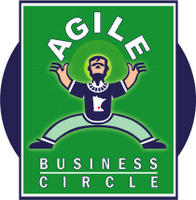Governance--how much is too much?
 My company has developed an operating manual for us to use to maximize our resources and take full advantage of opportunities. The Operating Manual includes several frameworks, including an IT framework.
My company has developed an operating manual for us to use to maximize our resources and take full advantage of opportunities. The Operating Manual includes several frameworks, including an IT framework.One of the key elements of the IT framework is governance. As we are in process of fully realizing the IT framework, it seems appropriate that we all agree on what governance is, and how to make it work.
Gartner defines IT governance as follows:
IT governance specifies the decision-making authority and accountability to encourage desirable behaviors in the use of IT. IT governance provides a framework in which the decisions made about IT issues are aligned with the overall business strategy and culture of the enterprise. Governance is about decision making per se — not about how the actions resulting from decisions are executed. Governance is concerned with setting directions, establishing standards and principles, and prioritizing investments; management is concerned with execution. In this IT Management Spotlight, we explore a variety of issues that our clients confront when trying to implement effective governance processes. Decisions can include:
- Policies and principles for IT usage by the business
- Defining vision and mission
- Integration of business and IT strategies
- Information architecture and technology directions
- Business applications (investment and support, IT infrastructure), investments and services
- IT security and risk management, and procurement and asset management
- IT shared services, service levels and performance metrics
- Cost allocation and chargeback
- Achieving business value from IT
- Oversight council and steering committee roles
- Assignment of ownership, accountability and custodians
- Post-implementation reviews
- Compliance with policies
(Source: Gartner “Find the 'Sweet Spot' for IT Governance, Strategy and Value”, John P. Roberts)
The challenge with a lot of IT governance models are that they do not provide agility and they slow down time to market since governance often involves management by committee. Agendas are many and committees take a long time to achieve consensus.
My thoughts:
- We need to implement governance to set direction, establish standards and principles and prioritize investments.
- All we need beyond this is to ensure that we have the right people in place, empower them to make the right decisions, and hold them accountable for decisions made.
- Execution is the responsibility of management!



 This Friday, I am off to Wisconsin with my peers to go fishing, have some fun, and strengthen relationships. Over the past year, we have experienced what I would consider substantial organizational change. As a result, some members are gone while others have have joined the group; some areas and projects have been integrated into the group and some have been eliminated. Clearly it is time for us to work on developing new relationships, earning each other's trust, and figuring out ways to work together to make us successful as a team. I believe fishing will be the mortar which binds all those building blocks together.
This Friday, I am off to Wisconsin with my peers to go fishing, have some fun, and strengthen relationships. Over the past year, we have experienced what I would consider substantial organizational change. As a result, some members are gone while others have have joined the group; some areas and projects have been integrated into the group and some have been eliminated. Clearly it is time for us to work on developing new relationships, earning each other's trust, and figuring out ways to work together to make us successful as a team. I believe fishing will be the mortar which binds all those building blocks together.
























